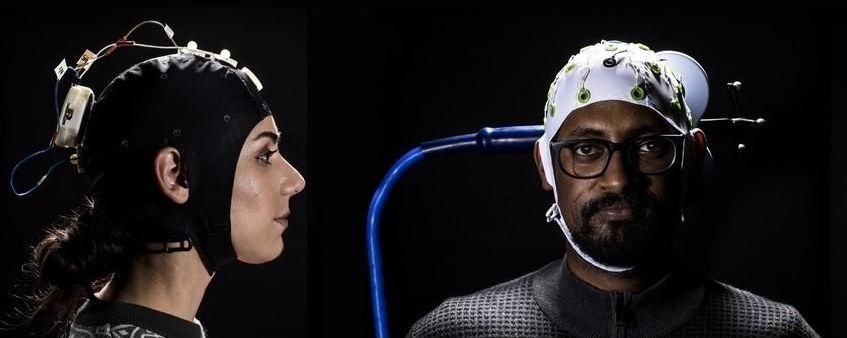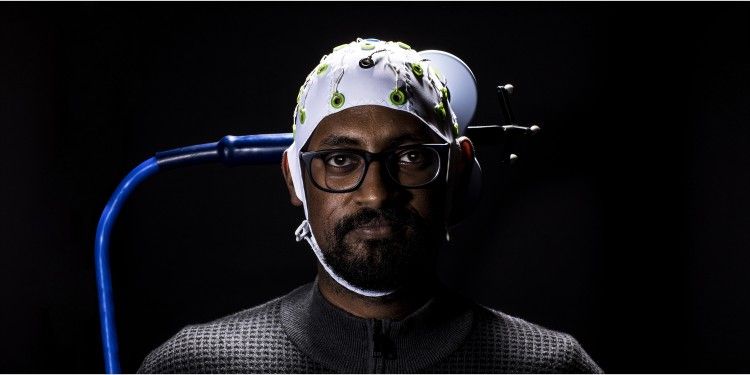‘We essentially “trick’” the neurons in the back of the brain to spread around the message that they have received signals from the eyes,’ one researcher explains.



Nanosized robots capable of crawling around on a person’s brain or underneath the skin may sound like a nightmare to some, but researchers suggest the mini machines could serve medical purposes such as gathering data on the brain or the spinal column.
Researchers at the University of Pennsylvania and Cornell University recently announced they have built nanosized, solar-powered robots made from silicon. One million such robots can fit on a 4-inch silicon wafer. “These robots are built massively in parallel, so I don’t build just one robot, I build a million robots, which is awesome,” declares Marc Miskin, an assistant professor of electrical and systems engineering at the University of Pennsylvania.
The microscopic machines can carry up to 30 times their own weight, travel at about the speed of biological cells, survive temperatures up to 400 degrees, live unscathed in battery acid or other harsh chemicals, and can be injected with a hypodermic needle.
Hitting a green energy milestone.
This is how Elon Musk makes and spends his billions.


You’d be hard-pressed to find more opposite opposites than jellyfish and robots. Jellyfish pump through the oceans with effortless grace, while robots struggle to not fall on their faces—and that’s when they’re not catching on fire.
Now, though, those two worlds are merging, with a tiny, exceedingly simple robot modeled after larval jellyfish that can scoot around untethered like the real thing. At less than a quarter inch across, the magnetically activated robot mimics the entrancing locomotion of a jellyfish and can use the resulting disruption of water flow to manipulate objects or burrow into the ground.
You’ve read your last complimentary article this month. To read the full article, SUBSCRIBE NOW. If you’re already a subscriber, please sign in and and verify your subscription.
What is today’s NASA’s Orion Spacecraft ascent abort test all about? We’re verifying the Orion capsule’s launch abort system, a tower on top of the crew module, can steer the capsule and astronauts inside it to safety in the event of an issue after liftoff. The test is quick, fast and high, lasting less than three minutes with the test crew module reaching an average speed of Mach 1.5, roughly 1020 miles per hour, at approximately 32,000 feet in altitude.
Live coverage: https://go.nasa.gov/323AaQO Latest updates: https://go.nasa.gov/323AbnQ

Quantum physics will bring us even faster computers and tap-proof communication. However, there are still a number of problems to solve before the breakthrough. The prototype of a quantum interface, which was developed at the Institute for Science and Technology (IST) Austria, brings us one step closer to quantum internet. The transfer of information from one quantum computer to another becomes possible.
One problem with quantum computers is that the electronics only function at extremely low temperatures of a few thousands of a degree above absolute zero (−273.15 °C). If the temperature in the computer rises, all information is destroyed. The reason for this is superconductivity – a macroscopic quantum state of materials whose electrical resistance drops abruptly to zero when the temperature drops below the transition temperature. In the case of the quantum computer, these are microwave photons that are extremely sensitive to noise and losses.
This temperature sensitivity currently makes it almost impossible to transfer information from one quantum computer to another. The information would have to pass through an environment with high temperatures it could not survive in.

University of Washington researchers created a method for two people help a third person solve a task using only their minds. Heather Wessel, a recent UW graduate with a bachelor’s degree in psychology (left), and Savannah Cassis, a UW undergraduate in psychology (right) sent information about a Tetris-like game from their brains over the internet to UW psychology graduate student Theodros Haile’s brain. Haile could then manipulate the game with his mind. Mark Stone/University of Washington.
Telepathic communication might be one step closer to reality thanks to new research from the University of Washington. A team created a method that allows three people to work together to solve a problem using only their minds.
In BrainNet, three people play a Tetris-like game using a brain-to-brain interface. This is the first demonstration of two things: a brain-to-brain network of more than two people, and a person being able to both receive and send information to others using only their brain. The team published its results April 16 in the Nature journal Scientific Reports, though this research previously attracted media attention after the researchers posted it September to the preprint site arXiv.
